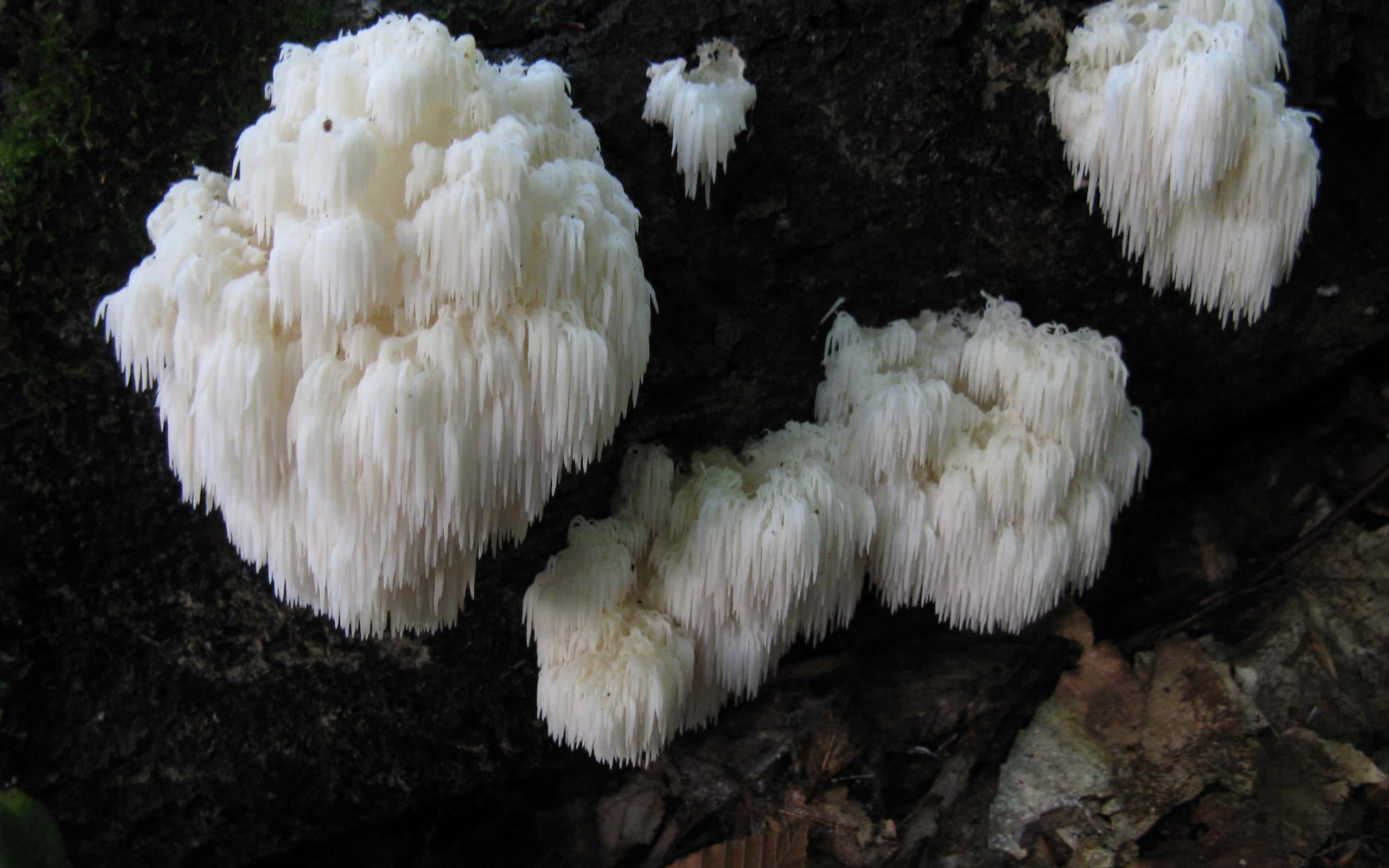Have you heard of the bear’s head tooth mushroom? Described like it is a creature out of a fiction novel, this fungus looks a lot like lion’s mane mushrooms. With a meaty texture, this mushroom is a healthy alternative to meat in many dishes. It also has some notable nutritional value. If you have never cooked or eaten it before, these mushrooms may seem a little intimidating. This guide will break down everything you need to know about this mushroom before you ever harvest it.
Bear’s Head Tooth Mushroom Classification
While they both go by the same common name, Hericium americanum typically grows on decaying hardwood trees in Eastern North America, while Hericium abietis typically grows from conifer trees and is found in Western North America. Hericium americanum, has a Latin root, translating loosely to mean “hedgehog from America.” The name refers to the similarity to the spines of a hedgehog, much like the lion’s mane mushroom. While Hericium americanum is virtually identical to Hericium abietis, you can differentiate the 2 from Lion’s mane pretty easily as lion’s mane is a lot tighter of a clump, while the other 2 branch out some.

and
Hericium abietisare 2 species that may be referred to as “bear’s head”.
©Karel Bock/Shutterstock.com
Where Do Bear’s Head Tooth Mushrooms Grow?
The white of the mushroom’s spines is probably the easiest way to spot these fungi in nature. They have a unique appearance with draping “teeth” that may look like needles to some. They need decaying wood that accommodates this growth pattern. The best environments for a bear’s head tooth mushroom are temperate environments.
While Hericium abietis is most commonly found out west, Hericium americanum prefers the ecology of states that sit east of the Rocky Mountains. They can be found in the wild, but some growers also cultivate them to sell commercially. If you try to grow them on your own, maintain a high humidity while not too high of temperatures. You will also need to keep the area sterile to avoid cross-contamination. If you do everything right, you could easily harvest pounds of these mushrooms. Whether cultivated or foraged they need to be used before turning yellow as they will get bitter.
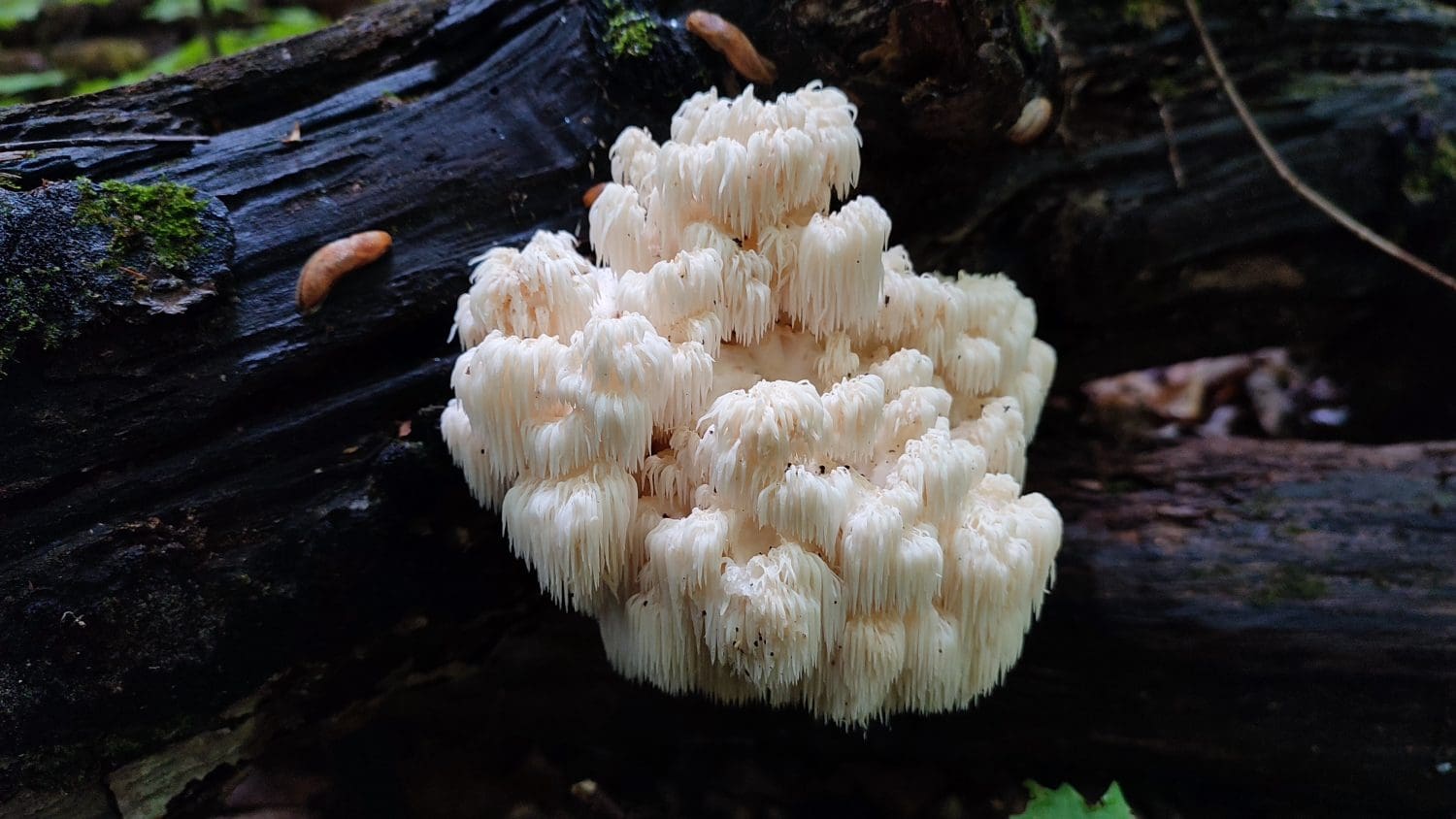
This majestic mushroom is known by many as one of the most beautiful in the world.
©Andriy R/Shutterstock.com
Are Bear’s Head Tooth Mushrooms Safe To Eat?
It is safe to eat bear’s head tooth mushrooms. Some people may consume them raw, but we advise you cook this mushroom (as well as most other edible mushrooms) before eating them. These edible mushrooms have plenty of nutrients, but your timing with the harvest makes a big difference. To get the full nutritional benefits – like the high amount of vitamin D, iron, and fiber – make sure you harvest the mushroom when you plan to eat it fresh. If you harvest and don’t eat the mushrooms the same day, placing them in your refrigerator’s crisper keeps it firm and fresh until you’re ready to enjoy it.
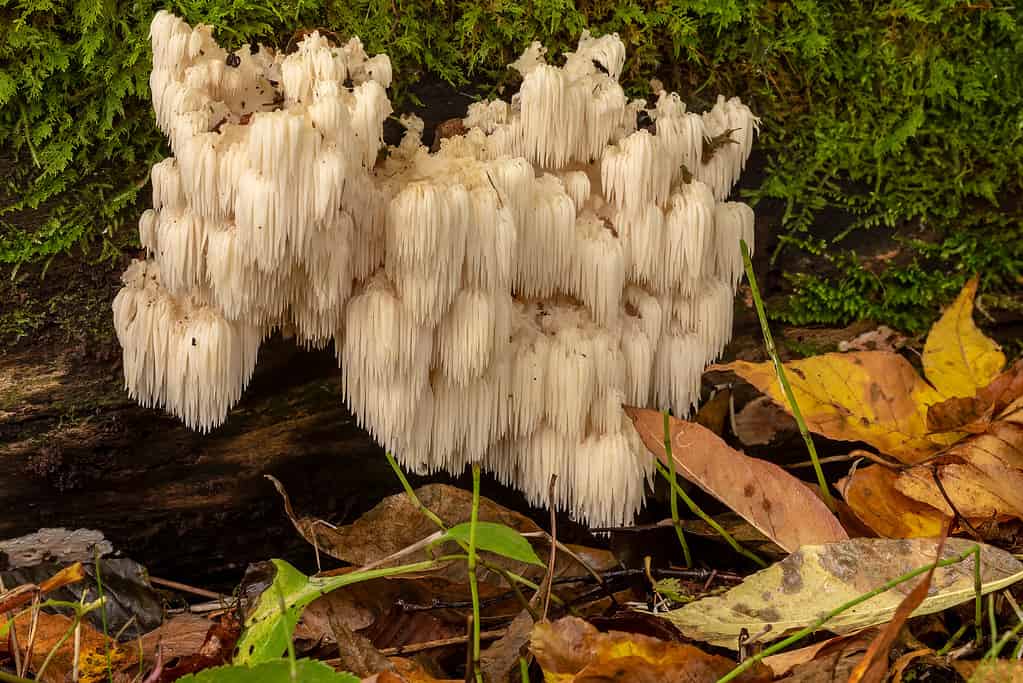
growing out of the side of a deciduous tree.
©Karel Bock/Shutterstock.com
Flavor Of Bear’s Head Tooth Mushrooms
When you consume the bear’s head tooth mushrooms at their peak, they have a mild nutty taste to them, some people may even call it sweet. They have a meaty but tender texture, much like some types of shellfish. Their gentle taste is sometimes compared to the chanterelle mushroom, which is another edible mushroom. While the chanterelle mushroom has an appetizing taste when it is yellow, the same cannot be said of the bear’s head tooth mushroom.
The mild flavor doesn’t last. The only way to keep the balanced flavor of this mushroom is by preparing and consuming it while the growth is still white. Aging causes the mushroom to turn yellow, which makes it bitter. Some people preserve their mushrooms with dehydration.
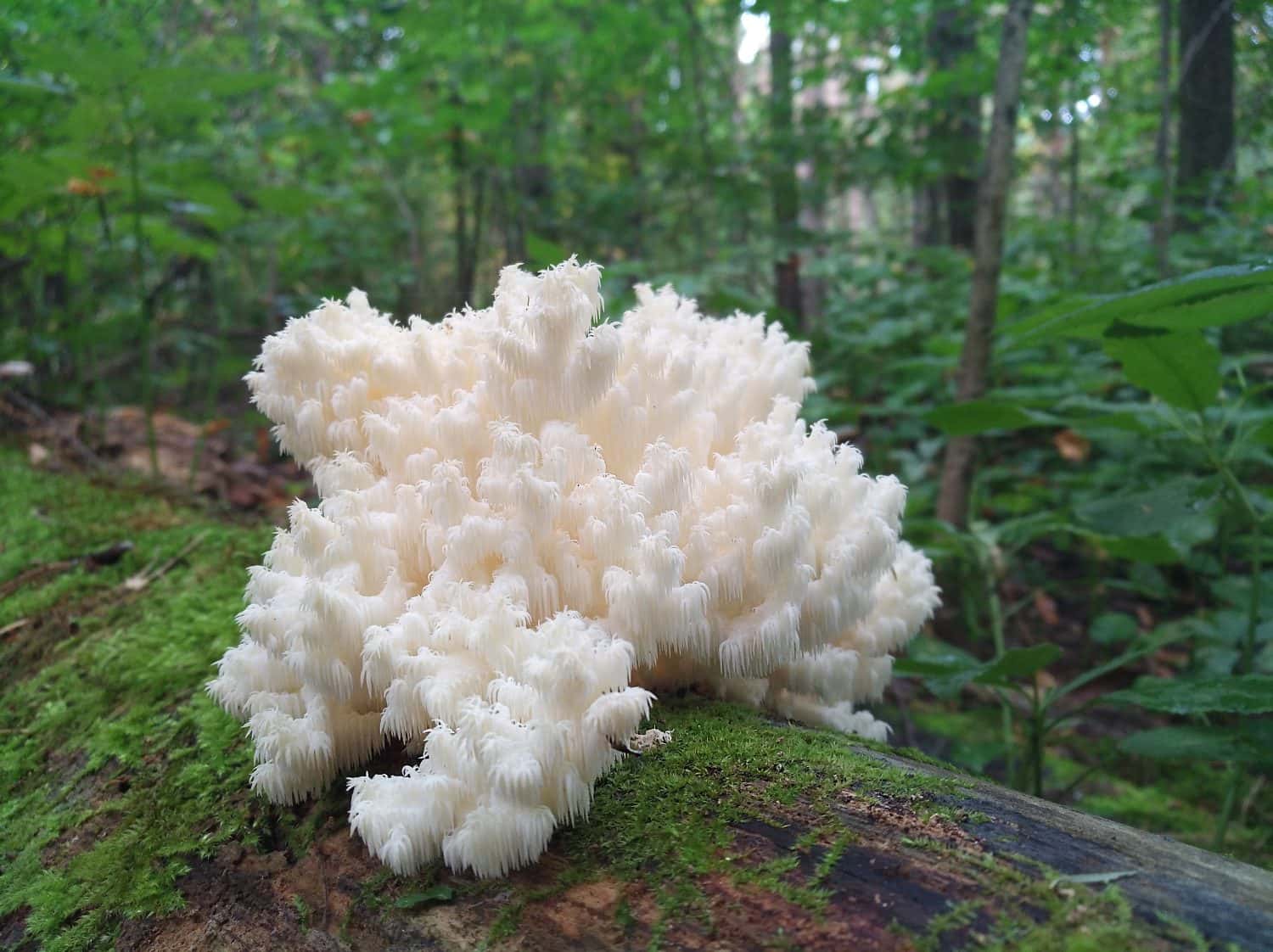
Some specimens can be more branched and look a lot like
Hericium coralloides.
©journeyman777/Shutterstock.com
How To Use Bear’s Head Tooth Mushrooms
While there are many ways to cook this mushroom, most cooks opt to sauté it to bring out the natural flavor. The reason that bear’s head tooth mushrooms are popular among home cooks and professional chefs is their versatility. With an endless list of possibilities, most people choose to sauté them and add butter and garlic. Others chop them into small enough flakes that they can make them into patties to cook in a skillet like a crab cake. Frying and baking brings out the texture, rather than drowning or burning it out. Breaking up the mushroom into smaller chunks makes cooking substantially easier.

Some people like to pull apart Bear’s Head Tooth before cooking it.
©Kyrylo Vasyliev/Shutterstock.com
Health Benefits of Consuming Bear’s Head Tooth Mushrooms
While most people consume these uniquely shaped fungi for their flavor, they contain iron, fiber, vitamin D, antioxidants, and do have some protein as well. Iron is an essential nutrient for the body because it supports the protein needed for red blood cells. Iron is also crucial for the development of hormones, supporting a balanced mood. Fiber promotes better digestion, which is even easier with the digestive relief that antioxidants bring.
Since this mushroom has an abundance of antioxidants, reduced inflammation may be one of the primary benefits. Inflammation is a major issue for anyone with arthritis or gastrointestinal inflammation, but you would need to eat a lot of this mushroom to possibly relieve any pain.

A proper diet rich in vitamins and nutrient can help you live a healthier and longer life.
©ARTFULLY PHOTOGRAPHER/Shutterstock.com
How Much Do Bear’s Head Tooth Mushrooms Cost?
These days most higher end grocery stores carry cultivated Hericium, but normally you will just find “lion’s mane”. Some people do grow other species of Hericium, but you’ll normally have to go to a farmers market or straight to the grow house to find them. While some companies sell it for as little as $12-15 a pound, some others charge much more. Shopping locally for specialty mushrooms gives you a little more control over how soon you consume them after they are harvested. Some shops also provide kits to allow you to grow your fungus at home and of course they can be found in the woods if you know what you are looking for.
When buying these mushrooms, always make sure that the body is truly white. If you notice any yellowing before preparing it, the mushroom is too old to consume.

Finding this mushroom is cheaper than buying, but you need to know what you are doing.
©Artmim/Shutterstock.com
Foraging For Bear’s Head Tooth Mushrooms
The best time of year to forage for bear’s head tooth mushrooms is during the end of the summer to the earliest weeks of fall, but it can be found other times of the year. They looks fairly similar to lion’s mane mushrooms to the untrained eye, but with a little work you can easily differentiate them.
Though the most common place to find bear’s head tooth mushrooms is on decaying trees, studies show that they have a parasitic effect if they are placed on a live tree. However, the only living trees that sustain it are the ones that have been damaged or injured, putting them at risk of being the mushroom’s host.
If you don’t want to forage for them yourself, you also have the option of cultivating them at home. Growing your own mushrooms means that you don’t have to wait for the seasonal harvest. Instead, these mushrooms can grow at any time of year in a controlled setting.
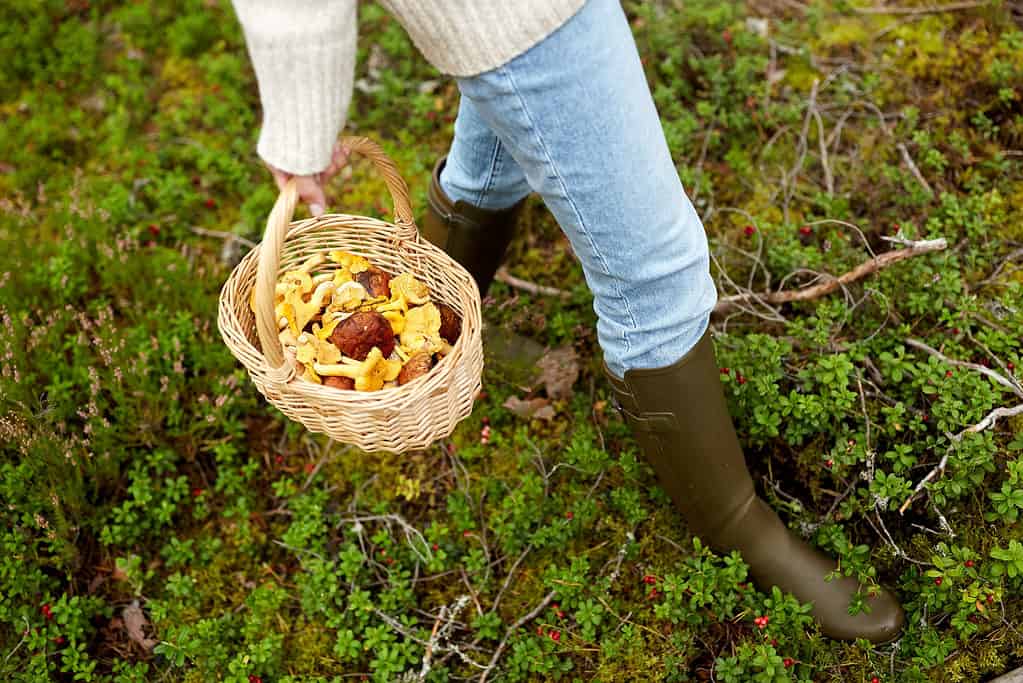
These mushrooms are some of the most sought-after mushrooms in the woods.
©iStock.com/dolgachov
Fun Facts About Bear’s Head Tooth Mushrooms
Here are a few unique facts about bear’s head tooth mushrooms.
- These mushrooms can have a diameter of over 15 centimeters with long, white spines extended from their body, resembling icicles.
- Bear’s head tooth mushrooms are one of at least 4 species of Hericium in North America.
- Despite having lengthy spines, the bear’s head mushroom doesn’t have any hair and doesn’t create a strange texture.
The information presented on or through the Website is made available solely for general informational purposes. We do not warrant the accuracy, completeness, or usefulness of this information. Any reliance you place on such information is strictly at your own risk. We disclaim all liability and responsibility arising from any reliance placed on such materials by you or any other visitor to the Website, or by anyone who may be informed of any of its contents. None of the statements or claims on the Website should be taken as medical advice, health advice, or as confirmation that a plant, fungus, or other item is safe for consumption or will provide any health benefits. Anyone considering the health benefits of particular plant, fungus, or other item should first consult with a doctor or other medical professional. The statements made within this Website have not been evaluated by the Food and Drug Administration. These statements are not intended to diagnose, treat, cure or prevent any disease.
Thank you for reading! Have some feedback for us? Contact the AZ Animals editorial team.

